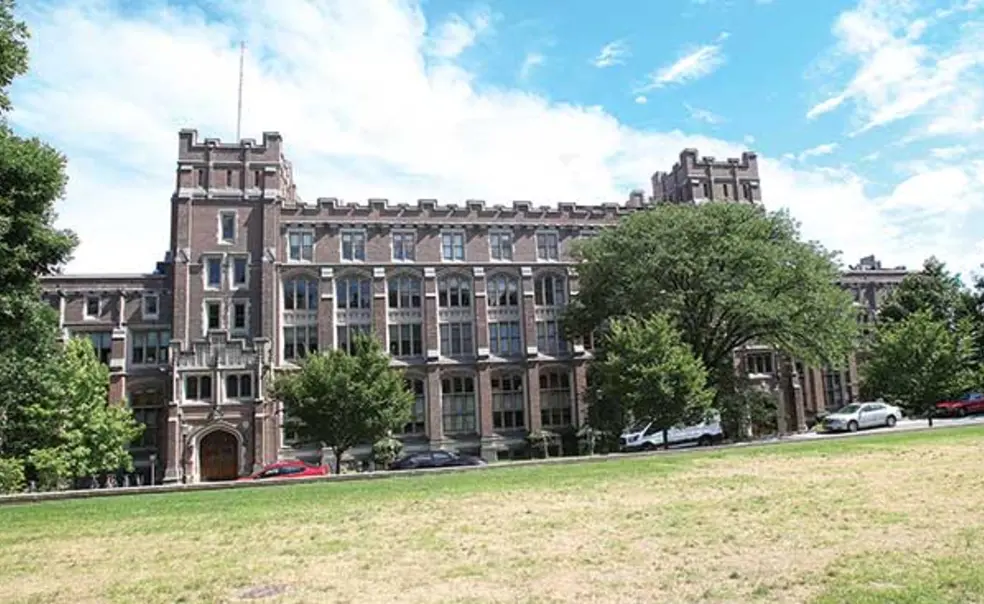Guyot’s Changing Role
The new home for computer science will have a new name: Schmidt Hall
When the University announced two years ago that it planned to build a new home for the environmental sciences now located in Guyot Hall, that led to a big question: What would be the fate of Guyot, the last academic building to be built during the Princeton presidency of Woodrow Wilson 1879?
That question has been answered with the news that Guyot Hall will be “substantially rebuilt and expanded” to provide a new home for computer science, which has become the University’s most popular major and is coping with a lack of space. The building will be renamed for Eric Schmidt ’76 and his wife, Wendy, whose gift is supporting the work. The gift amount was not disclosed.
“Eric Schmidt’s brilliant career as a computer scientist makes the Schmidt name especially fitting” for the new home of computer science, President Eisgruber ’83 said in a statement. Schmidt was CEO of Google from 2001 to 2011 and later was executive chairman of Alphabet Inc., Google’s parent company. Wendy Schmidt, a businesswoman and philanthropist, is president of the Schmidt Family Foundation.
Construction is planned to begin in 2021 on a building to be located along Ivy Lane and Western Way to house the departments of geosciences and ecology and evolutionary biology (EEB), along with the Princeton Environmental Institute. Other engineering facilities are also expected to be built along Ivy Lane/Western Way.
Once the environmental sciences building is completed, Guyot will be vacated; the renovation work for computer science is scheduled to begin in early 2024 and to be completed in 2026. The University said the collegiate Gothic details of the brick exterior — which include 200 gargoyles of living and extinct animals along the roofline — will be preserved. The Guyot name — honoring the University’s first professor of geology and geography, Arnold Guyot — will also be preserved in another location, the University said.
Computer science faculty and staff are currently located in nine sites on and off campus, said department chair Jennifer Rexford ’91. She said moving the department into Guyot Hall demonstrates the importance of a central campus location that provides “a strong connection to the sciences” as well as to the Woodrow Wilson School and departments in the humanities.
Wendy Schmidt said the planned transformation of Guyot reflects the evolution of computer science “from something that was kind of ancillary and theoretical and abstract” when Eric Schmidt was an electrical engineering major at Princeton, to today’s world “where the application of computer science is important to the study of every discipline across the University.”
As the campus hub for data science, the building is also expected to house the Center for Information Technology Policy, the Princeton Institute for Computational Science and Engineering, and the Center for Statistics and Machine Learning, Rexford said.
Alumni may wonder about the fate of the geosciences department’s 25-foot-long Allosaurus skeleton that is a Guyot landmark. “We love the Allosaurus,” Eric Schmidt said, “but rumor is that the people who own the Allosaurus are taking it with them.”











3 Responses
Michaele Kashgarian ’83
6 Years AgoGuyot’s New Role
(Via Facebook) I know the new geosciences facility will be amazing, and that the collegiate Gothic details of the brick exterior of Guyot Hall will be preserved and the Guyot name will “be preserved in another location.”
But I’m still wistful about GEO in Guyot!
Matthew Costa ’11
6 Years AgoShifting Academic Priorities
As reported in PAW (On the Campus, July 10), the University is eviscerating and renaming Guyot Hall, moving out ecology and evolutionary biology and geosciences and moving in computer science. As an EEB alumnus pursuing a Ph.D. in oceanography, the change concerns me, partly for sentimental reasons but also due to the perception of a sinking baseline of academic focus on the study of the natural world.
Guyot Hall, named after Arnold Henry Guyot, foundational geology professor and significant figure in 19th-century science, is historically valuable to Princeton. This history, along with its biodiversity-themed external architecture and museum collection within, makes it the proper home of EEB and GEO. Moreover, Guyot’s connection with the molecular biology buildings to the south represents a holistic view of studying nature, melding the reductionist tools of the molecular and information revolutions with an integrative understanding of ecological and Earth systems.
Granted, the University’s plan for EEB and GEO includes improved labs in a new building. But letting them drift away from a hotspot of research activity signals that the University is turning from science that focuses outward on the real world and welcomes in the public with natural history exhibits. Instead, Princeton is consolidating its heart of silicon. Information technology is immensely valuable to science, but I hope the University better balances investigation of the real world and exploitation of the world of 1s and 0s. It’s too bad there aren’t any billionaire ecologist donors to make this point to Princeton.
Sheryl Ann Robas
6 Years AgoNot All Are Happy
Regarding the article by W.R.O. and Guyot's changing role, it would have been nice if the Geosciences Department was able to express how we feel about the changing role of Guyot. I have been in this building since 1991, and nothing has been written about how the staff, students, and professors feel. We are not all happy; some of us are sad in leaving. Boo on the article and changing Guyot's name. I guess you will etch the name of the building just like it never existed.